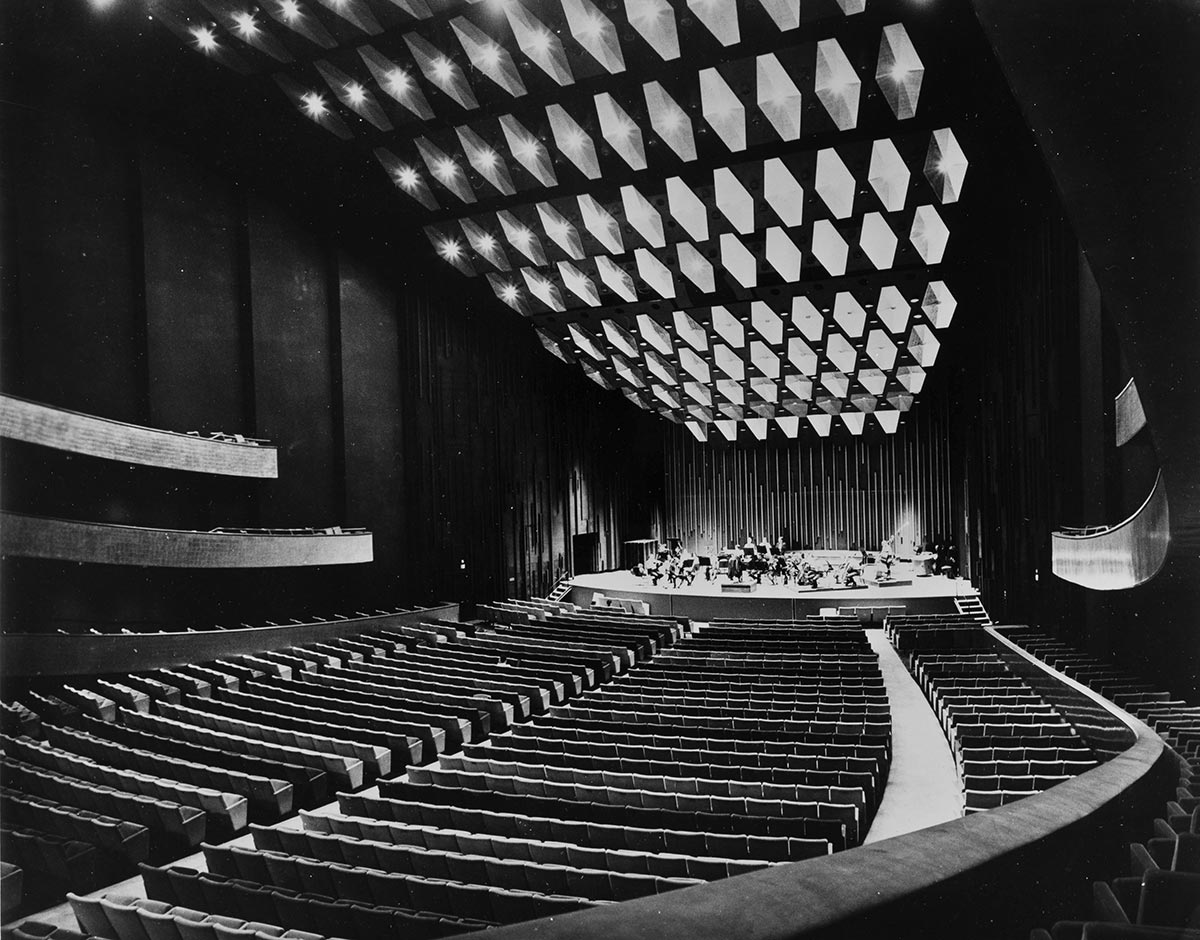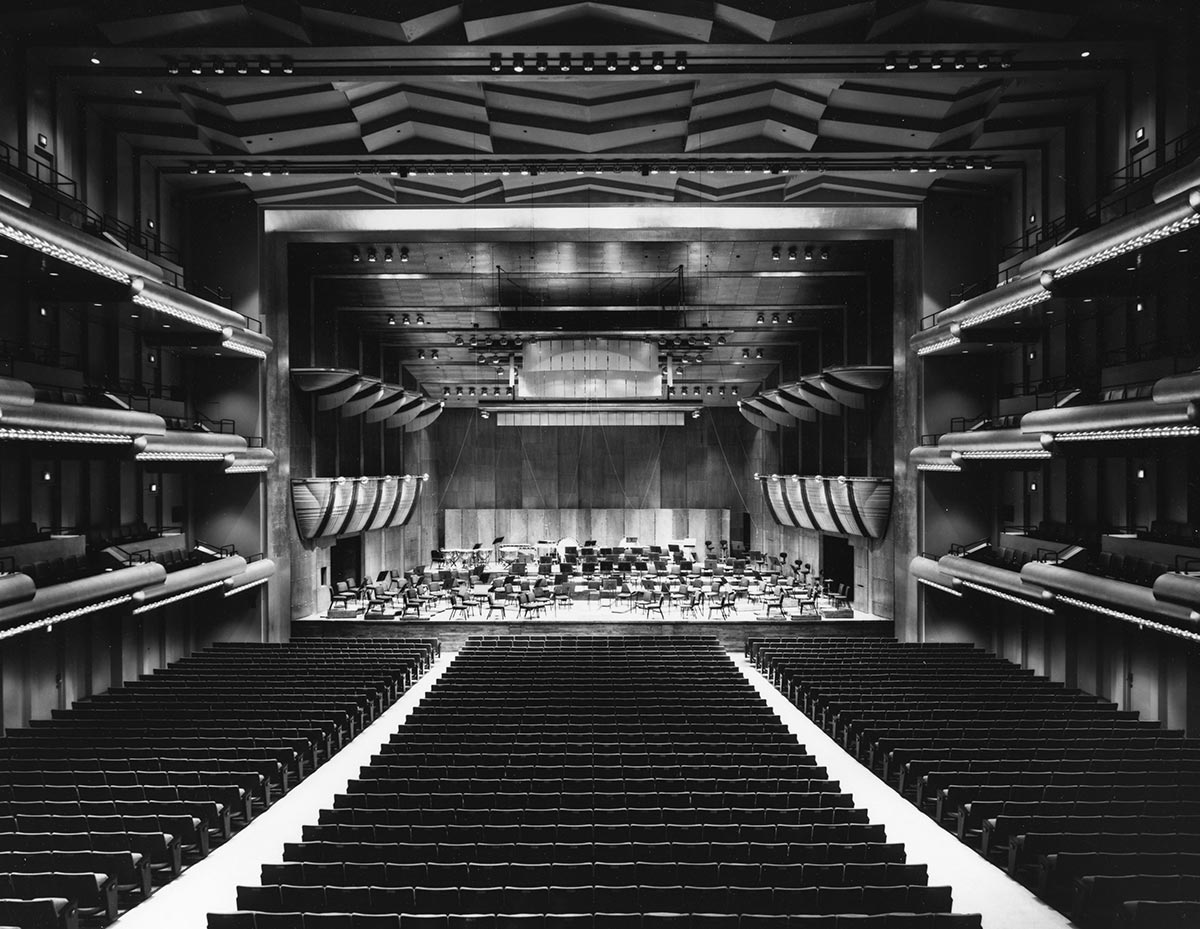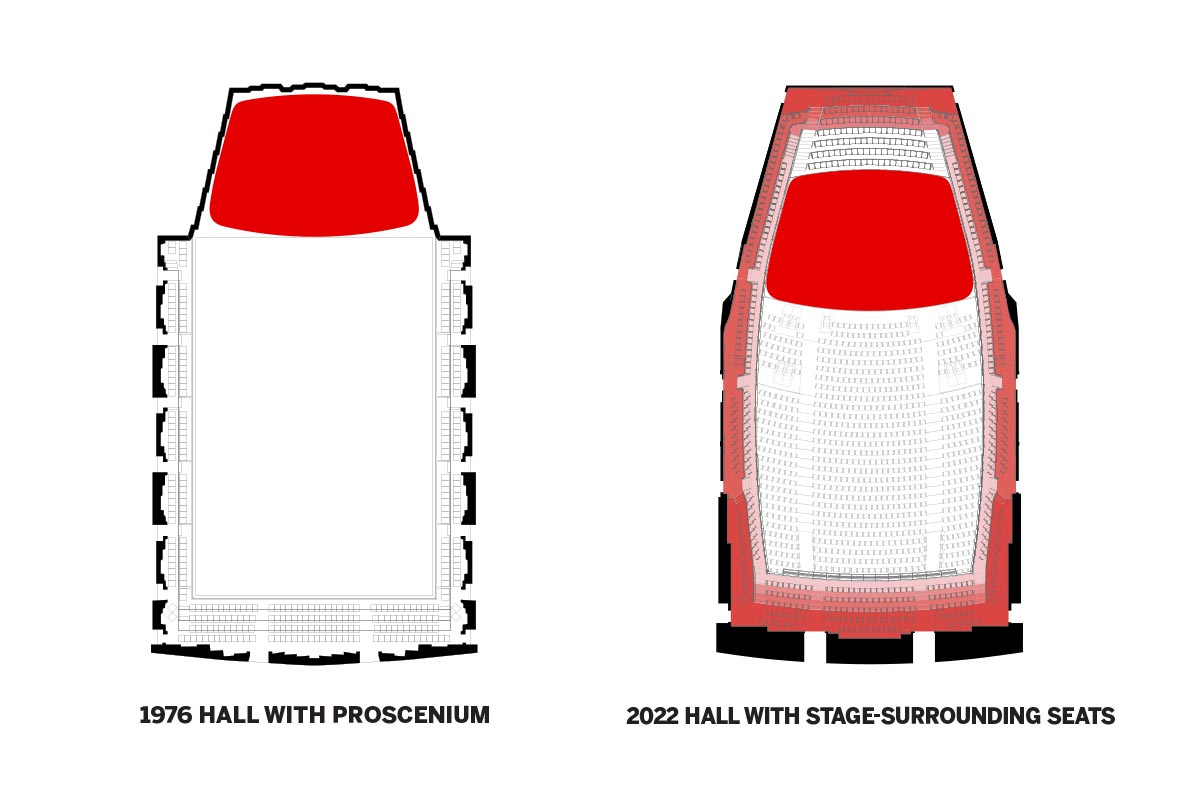Arts & Culture
Diamond Schmitt and Tod Williams Billie Tsien Architects reimagine New York’s David Geffen Hall
BY JAMES S. RUSSELL, FAIA
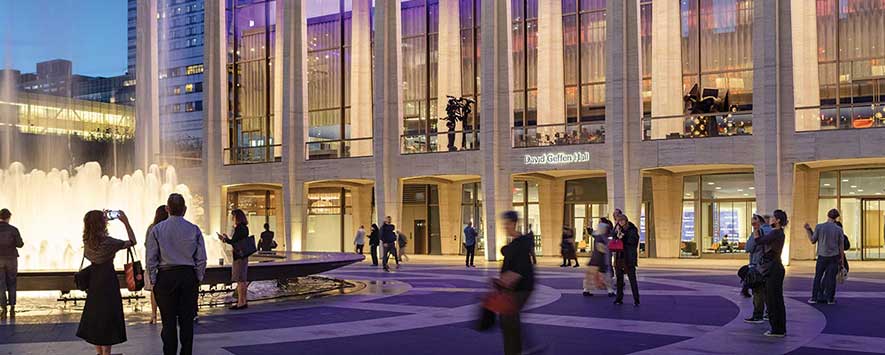
All photos © Michael Moran
David Geffen Hall.
Does a concert hall with great natural sound matter anymore? People can access beautifully recorded music through their computers, mobile devices, and home audio/video equipment. Saddled with a dreary, substandard 2,738-seat hall with a dwindling audience, Lincoln Center and the New York Philharmonic had to face a hard question: what would persuade people to leave the comforts of home and pay to hear a live performance?
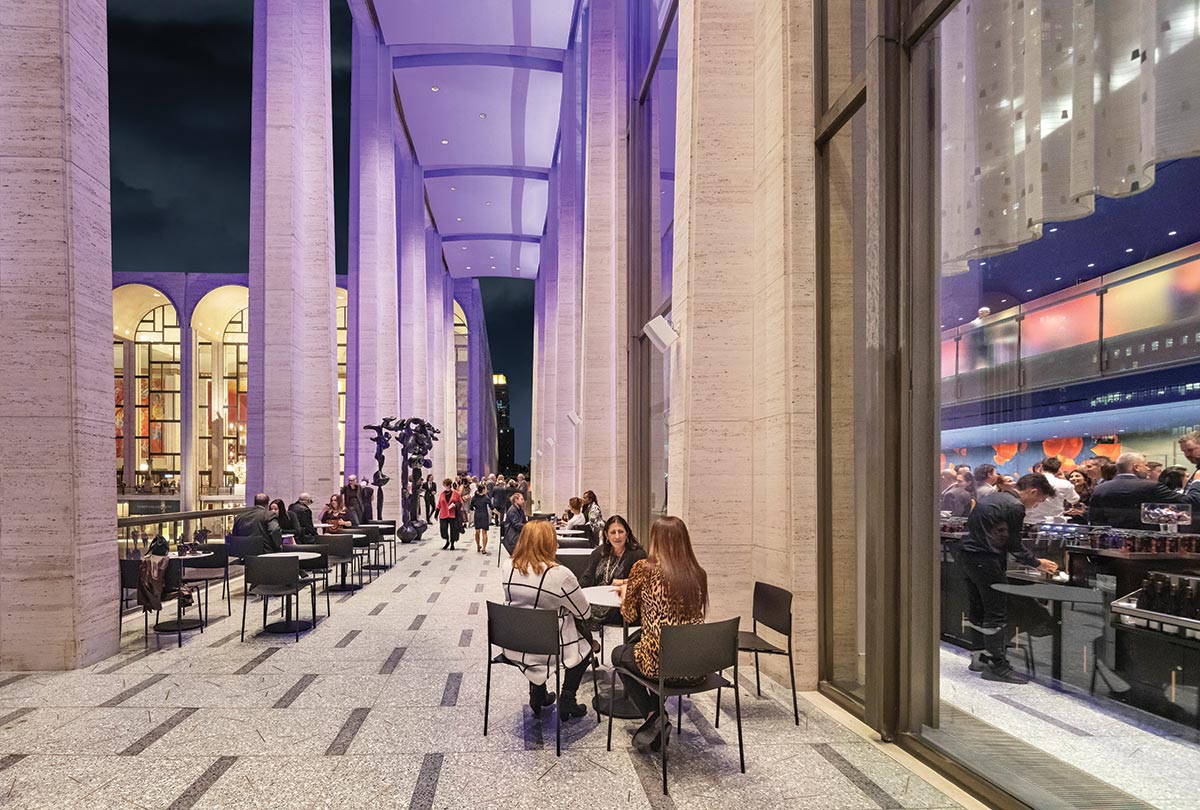
The glass and travertine shell by Max Abramovitz, including its porticoed terrace, is unchanged, though new lighting and diaphanous draperies hint at the transformation.
That became a particularly urgent question in the early 2000’s, when the shortcomings of Lincoln Center’s primary concert venue could no longer be overlooked. The acoustic problems dated back to the original design by Max Abramovitz of Harrison & Abramovitz. Then known as Philharmonic Hall, it opened in 1962 and was unsuccessfully altered several times. The orchestra had lived for decades with a 1976 gut renovation by Philip Johnson and John Burgee (with acoustician Cyril Harris). That iteration stretched what was then called Avery Fisher Hall into the rigidly rectangular “shoebox” plan of such admired venues as Boston’s Symphony Hall. The sound improved, but audiences felt distant from the musicians and disengaged from the experience.
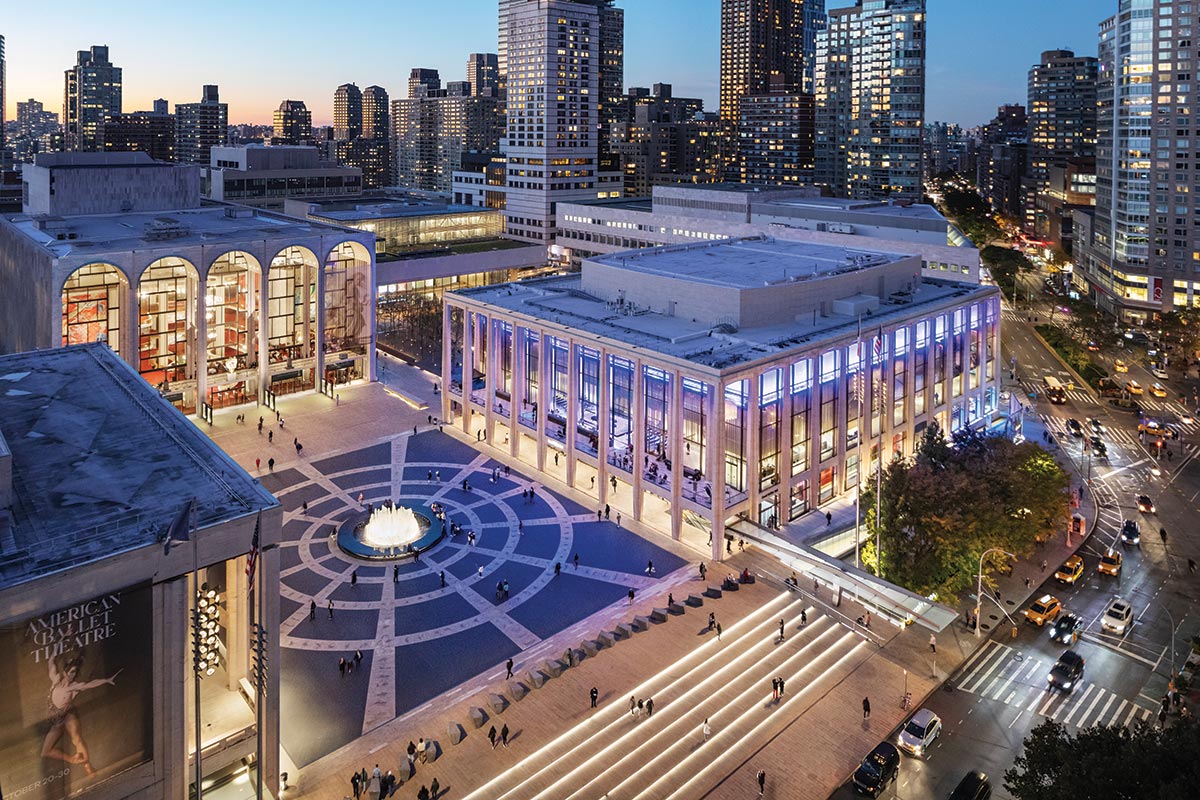
The new hall shines among neighboring venues at Lincoln Center (above) and welcomes audiences and locals with a Sidewalk Studio and loungelike lobby (below).
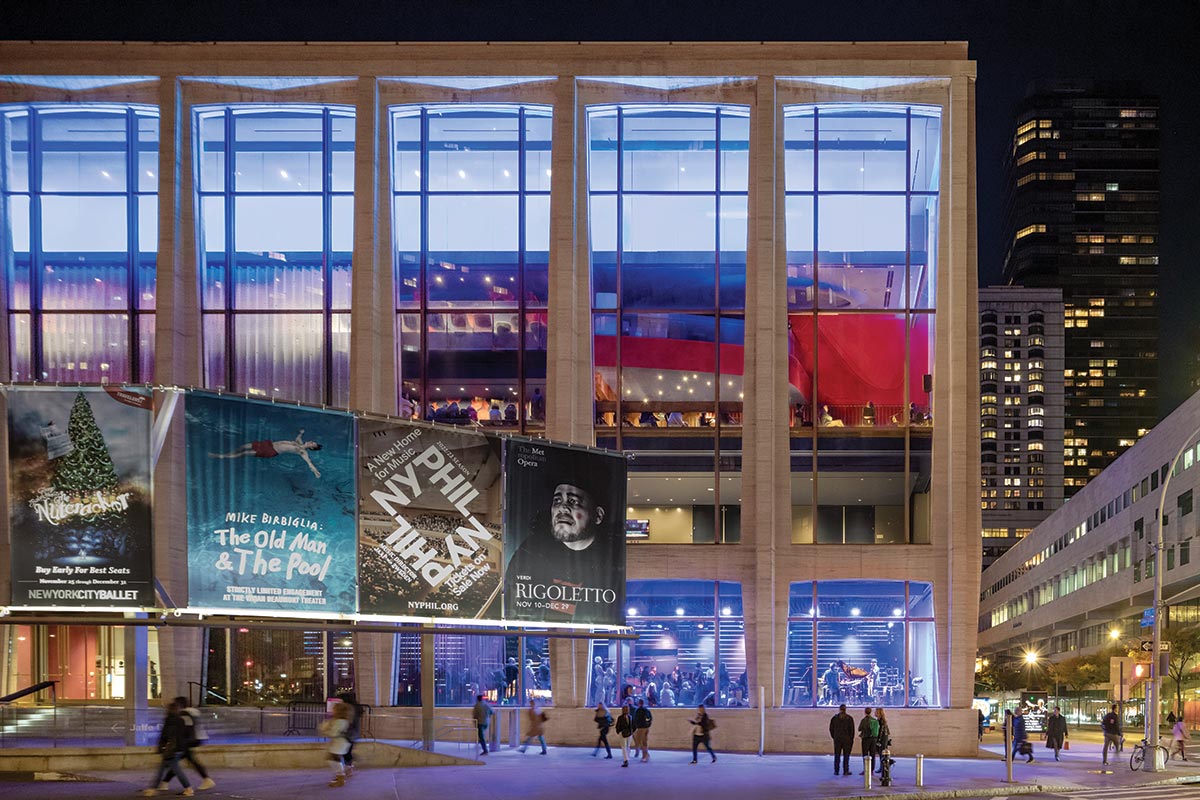
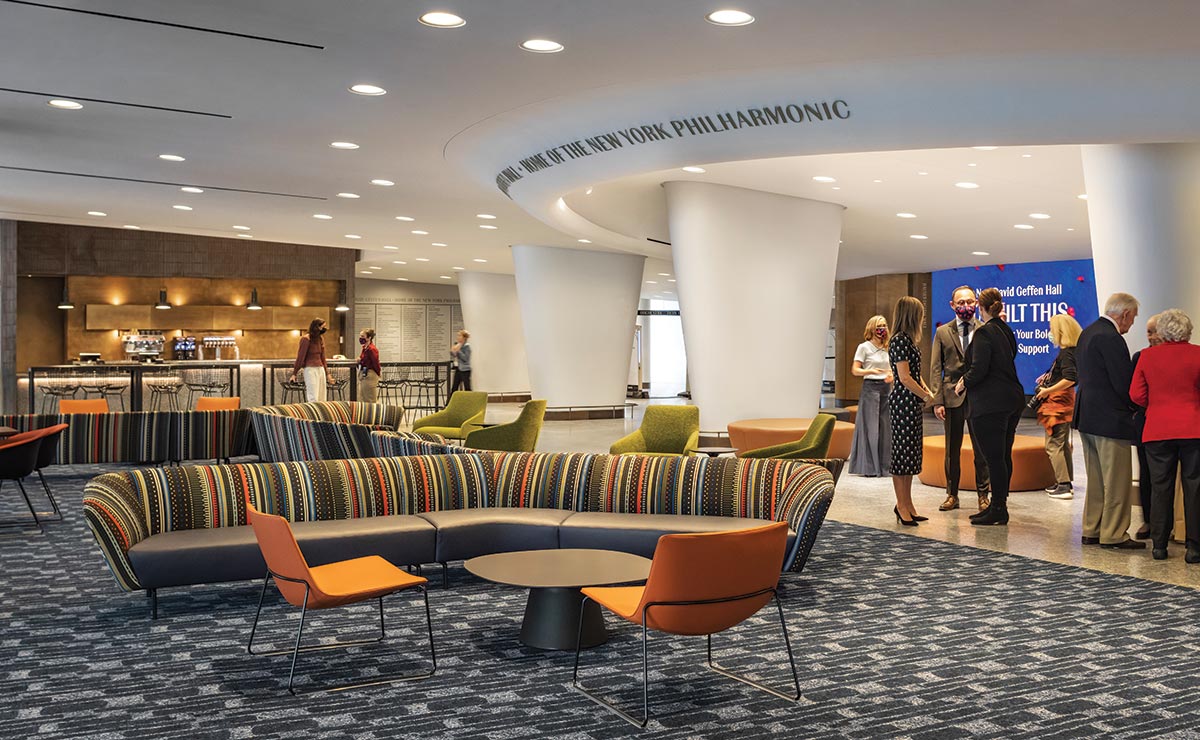
After several false starts, a gift in 2015 from the entertainment mogul David Geffen, followed by the arrival of a new leader for the Philharmonic, Deborah Borda—who had brought Frank Gehry’s Walt Disney Hall to fruition (RECORD, November 2003)—sparked an act of great faith: raising $550 million to attempt another transformative overhaul. The clients teamed Diamond Schmitt, experienced in opera and concert hall design in Montreal; Saint Petersburg, Russia; and the firm’s hometown, Toronto, with Akustiks, a Norwalk, Connecticut, sound consultant that had worked on halls in Nashville, St. Paul, and Cincinnati. (An earlier design, in which Diamond Schmitt had been paired with Thomas Heatherwick, was canceled in 2017 due to a ballooning budget.)
The clients and design team united behind a rethink of the auditorium that would connect with audiences through a visceral, immersive sound and architectural experience—one that would appeal to the Philharmonic’s core fans while broadening its reach with performances that shatter the limits of traditional classical-music programming. In this way, says Diamond Schmitt principal in charge Gary McCluskie, “the live event produces engagement that comes to the fore.”
New York–based Tod Williams Billie Tsien Architects (TWBTA) was brought in to bring a greater sense of occasion and improved circulation to the cramped lobby and austere upper-level concourses. The result is a venue with three distinct personalities: the unchanged exterior, a glass box lined with tapered travertine columns in an ambivalent mashup of Classical proportions and Modernist details; the lobby and public spaces, where TWBTA has deployed a hospitality style very much in contrast to Abramovitz’s civic-monument neutrality; and the auditorium, which Diamond Schmitt has treated with purposeful, wood-paneled restraint. The reimagined hall opened in early October.
Self-consciously styled as a “living room,” a lounge just inside the entrance suggests a hotel lobby and has instantly been adopted as a hangout by audience members and casual visitors; it is open all day, even when there are no performances. It replaces an intimidating wall of ticket booths. With administrative offices moved to the top floor, this once-cramped entrance has doubled in size and now features a 50-foot-wide video screen that can simulcast performances and display digital artworks such as the inaugural tableau, An Eclectic Dance to the Music of Time, by Jacolby Satterwhite.
Other changes activate the sober Harrison & Abramovitz exterior: a street-facing welcome center invites ticket-buyers and passersby to learn more about Lincoln Center events while enjoying a coffee; A Sidewalk Studio—visible through the expansive windows of a former private office on a pedestrian-thronged corner—features a lively digital wall and hosts such events as a Nightcap series of cabaret concerts.
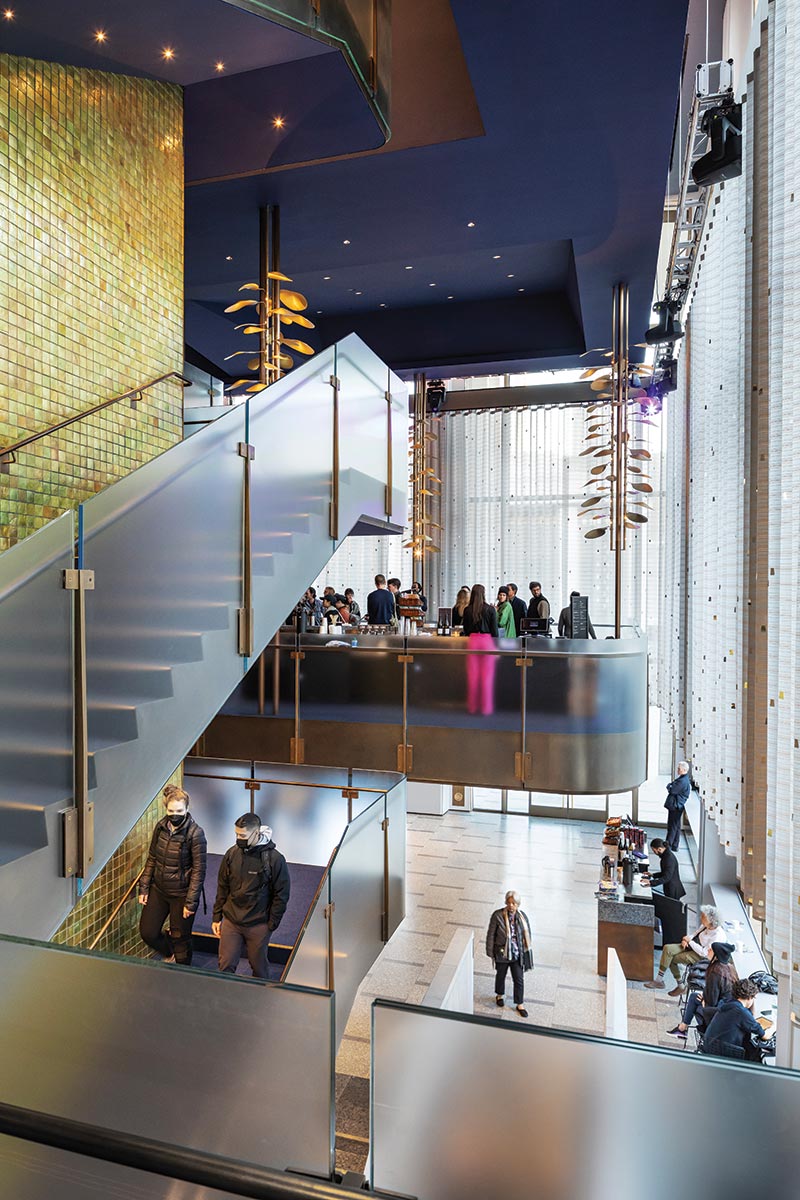
Bronze-wrapped cables bearing expanded first-tier overlooks on each side of the atrium double as housing for leaflike luminaires.
Above the lobby, Abramovitz’s cool, neutral surfaces on concourses for orchestra seats and three balcony levels have been painted cobalt blue. A felt wallcovering printed with oversize “falling flower petals,” as Tsien calls them, in shades of red, fuchsia, and orange, clads the auditorium exterior, and glows through frosted-glass and bronze railings. A convivial nightclub aura invites audiences to linger, and was devised with concerts, galas, and other events in mind (not to mention bringing in additional revenue), aided by numerous bars and retractable, ceiling-hung trusses for special lighting and sound effects.
TWBTA also reconfigured the atrium that Abramovitz built above the lobby. Now the first tier extends out toward the glazed facade on either end, enabling a more dynamic appreciation of the swirl of people at every level. Cables clad by bronze pipes suspend these balconies; they sprout leaves that diffuse light from built-in lamps.
The theatricality of this procession toward the auditorium may seem a prelude for architectural spectacle within. Instead, audiences will encounter warmth but also a restraint akin to Diamond Schmitt’s previous halls. The architecture defers to the music.
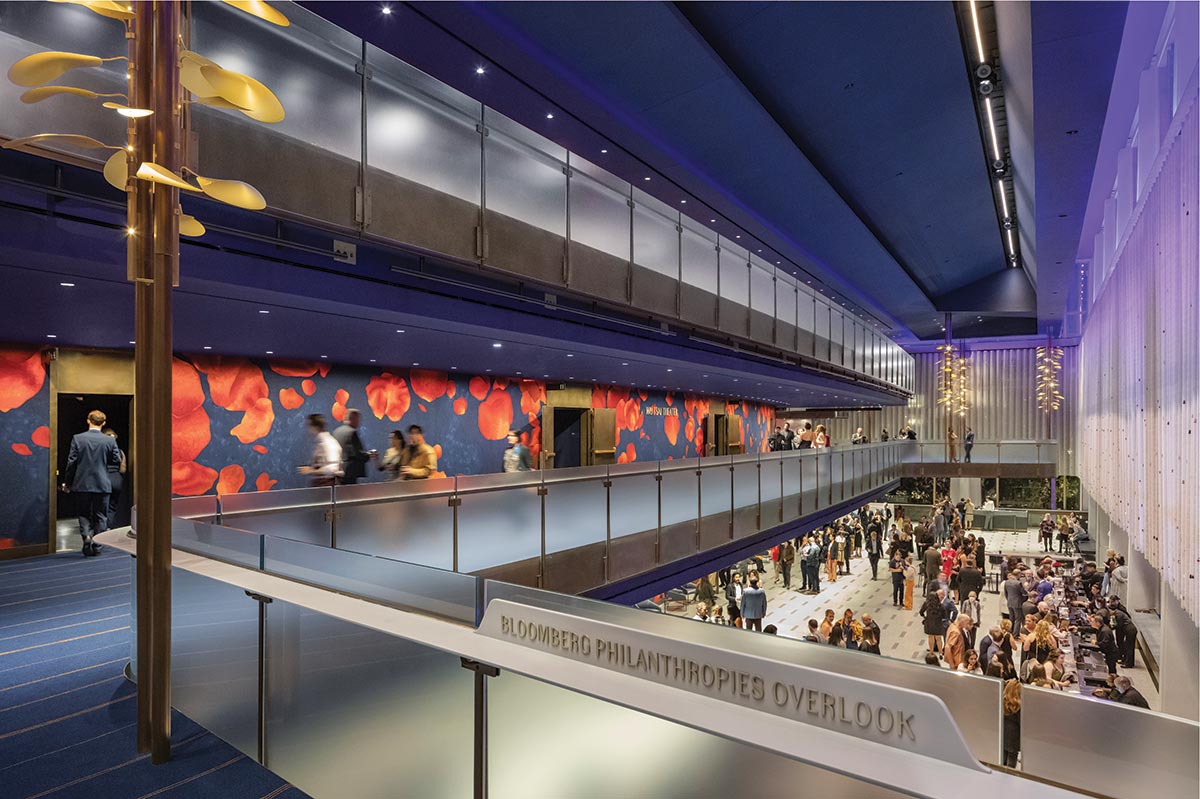
Saturated colors and warm materials enliven areas outside the hall.
Though it was built within the steel frame and concrete-block perimeter of the 1962 hall, the long-sought intimacy that successfully transforms the experience comes from moving the stage 25 feet into the orchestra-level seating and reducing the overall audience count by 500, to 2,200.
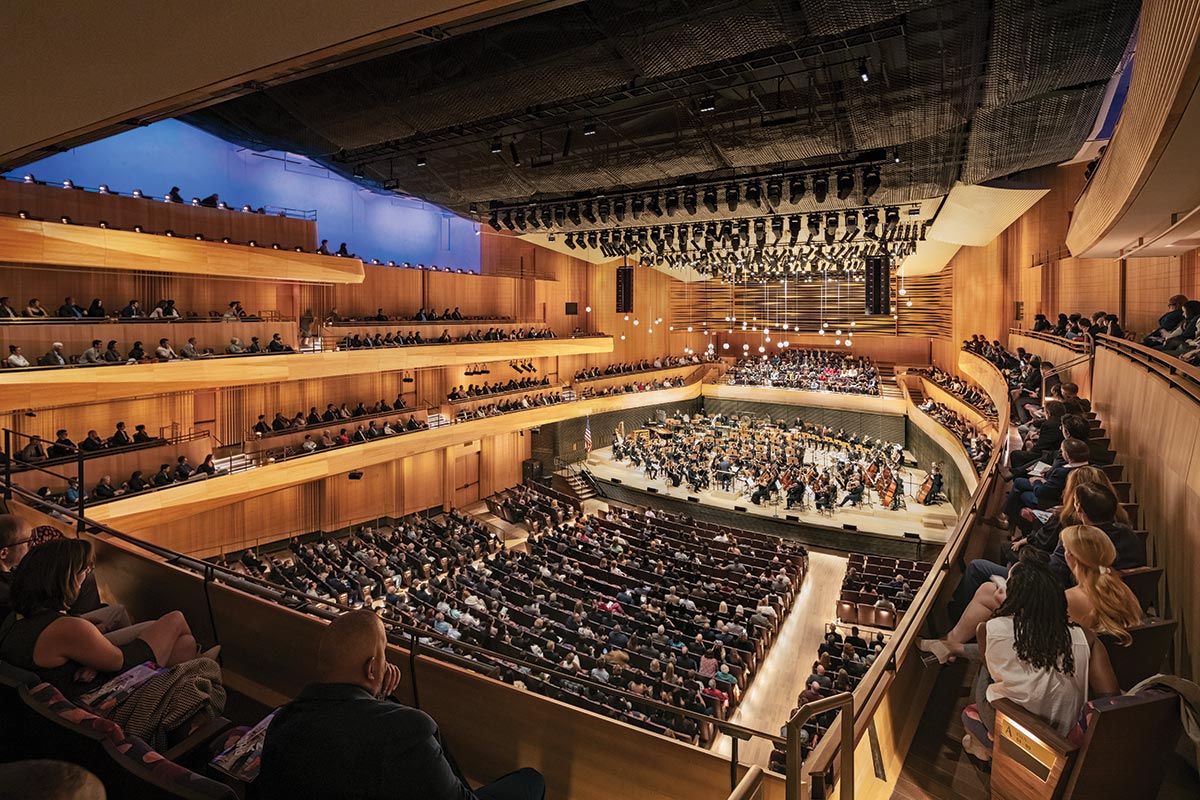
The stage was thrust deeper into the audience, with seating tiers that wrap the performers, akin to the “vineyard” plan of several recent halls.
A low-ceilinged proscenium that trapped sound has been demolished to achieve the sense of a “single room” that performers and concertgoers share, McCluskie says. Now the side seats of two of the hall’s three tiers curve gently inward to frame the stage, forming the “shallow vineyard” that the architect and acoustical consultant envisioned (see “Acoustic Redux,” page 90). These seats offer musical immersion and close views of the players. Seven rows of seats behind the stage allow those ticket-holders to face the conductor, or they can contain a chorus.
The beechwood panels that wrap the room “are a unifying visual element,” says McCluskie, and among several strategies intended to reduce the formality of the Johnson design. While the original Philharmonic Hall was conceived as a temple for natural sound, the clients recognized that Geffen had to be far more versatile, so it can support film and amplified performances. The stage—and the seating area behind it—can take on numerous configurations to suit various programs.

Side tiers curve in toward the rear of Geffen Hall (above), while the outer walls retain the rectangular “shoebox” shape of the 1976 revamp.
Early performances put both the sound and the advanced video and lighting to the test. Reviews have been positive, if cautious, with most critics describing a new wealth of instrumental intensity, detail, color, and timbre. Selections that mixed the orchestra with video and a partly amplified jazz septet, as well as a performance in which an amplified vocal ensemble led the orchestra, showed that acoustic and enhanced performers could successfully coexist. As for unamplified sound, the New York Times music critic Zachary Woolfe found the hall “mightily improved,” though he feared it was marred by “an objective, almost clinical feeling.” He did note that the sound was consistently balanced throughout the space (a rarity even in the best halls), whether in the rear balconies, where the hall’s resonance most noticeably kicks in, or at the sides, from the newly created seats around the stage.
In recent performances this writer attended, the programs attracted more diverse and younger audiences. With the classical repertory being nearly the last bastion of unamplified performance, Geffen’s versatility may lead to the rediscovery of natural sound for all kinds of music—from jazz to traditions of “unplugged” music from around the world.
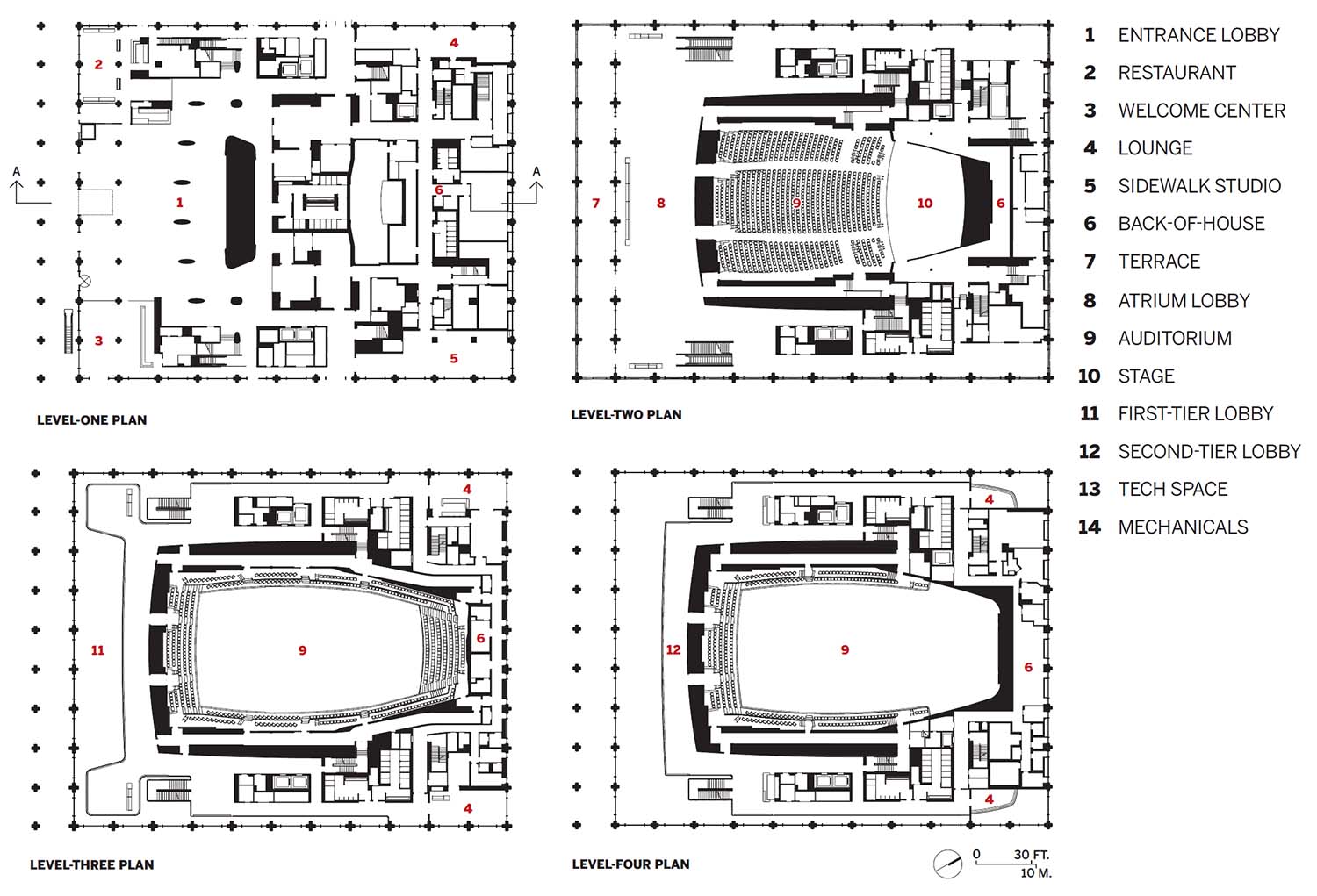
Image courtesy Diamond Schmitt Architects
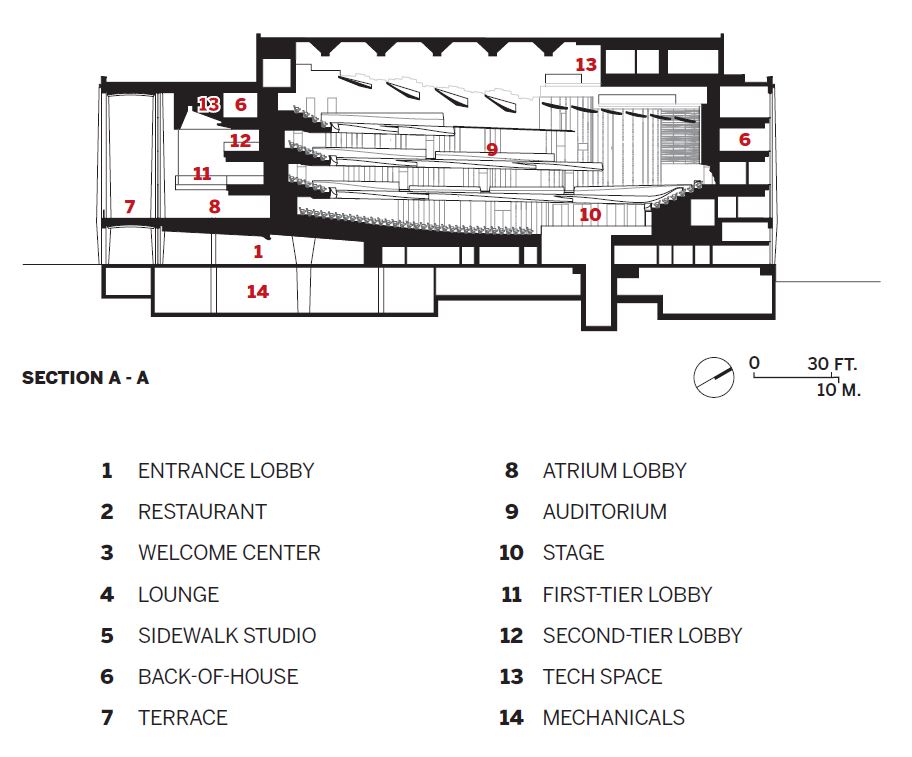
Image courtesy Diamond Schmitt Architects
Credits
Architect (Concert Hall): Diamond Schmitt Architects (concert hall) — Gary McCluskie, principal in charge; Sybil Wa, Matthew Lella, project architects
Architect (Public spaces): Tod Williams Billie Tsien Architects | Partners — Tod Williams, Billie Tsien, princi--pals in charge; Paul Schulhof, partner; Azadeh Rashidi, John Skillern, project managers; Whangjin Suh, Olen Milholland, project architects
Engineers: Thornton Tomasetti (structural); Kohler Ronan (m/e/p/fp)
General Contractor: Turner Construction Company
Consultants: Akustiks (acoustic design); Fisher Dachs Associates (theater planning); Fisher Marantz Stone (lighting); Forst Consulting Architects (envelope)
Client: Lincoln Center; New York Philharmonic
Size: 225,000 square feet
Cost: withheld
Completion date: October 2022
Sources
Metal Panels: Centria
Glass: Pulp Studio
Wood: Fetzer; Legere
Ceilings: Kreysler & Associates; Eventscape
Lighting: Aurora Lampworks
Interior finishes: Benjamin Moore; Liora Manné; Formica; Corian; Orsoni; Scott Group; Kriska Decor; Eric Bruce with creation Baumann
Furnishings: Arper; Andreu World; Geiger; Knoll; Prismatique; Maharam




